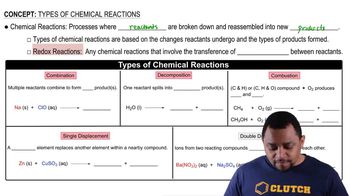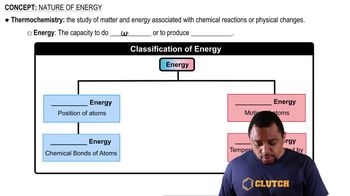Which of the following biomolecules contain nitrogen?
a. Glycogen
b. Nitric oxide
c. Collagen
d. Epinephrine
e. Stearic acid
f. Fructose
 Verified step by step guidance
Verified step by step guidance Verified video answer for a similar problem:
Verified video answer for a similar problem:



 7:15m
7:15mMaster Review of Metabolism Concept 1 with a bite sized video explanation from Jules
Start learning